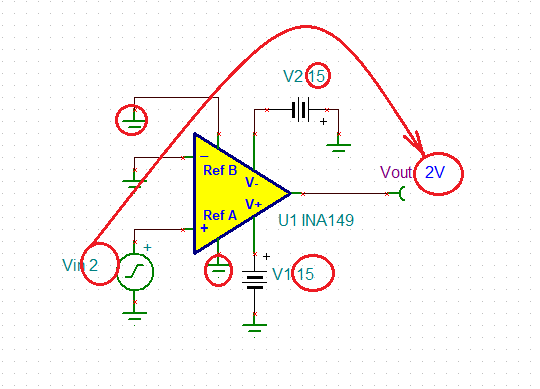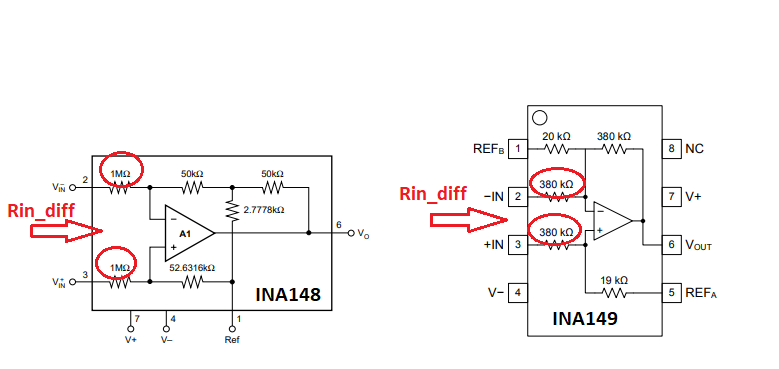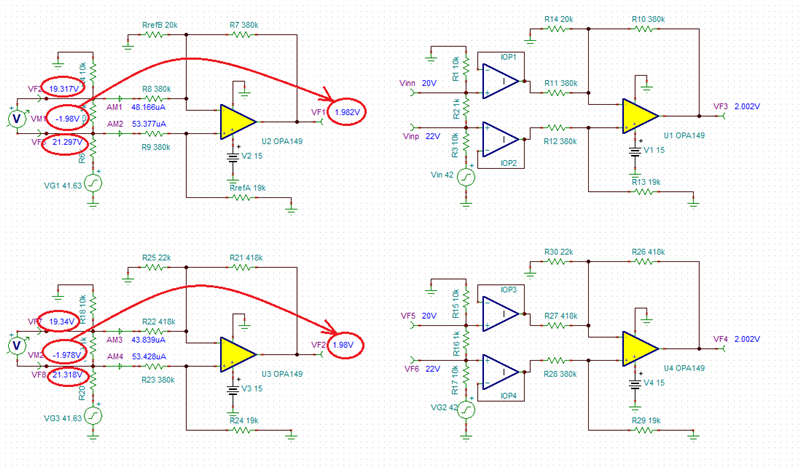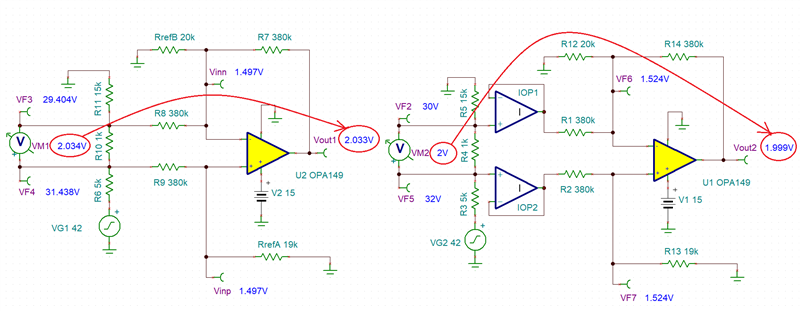Other Parts Discussed in Thread: TINA-TI, INA148, INA823, INA121
I am using IN149AMDREP to measure the voltage drop across a resistor that will typically have 2.00v across it The circuit was originally designed using IN148UA but supply chain caused a switch to IN149A. When I measure across pin 2 and 3 and compare to pin 6 to ground I see an error of 27mv, 82mv, 20mv, 23mv, 59mv when measuring 2.00v input. The data sheet states 3500uv(3.5mv) as max offset voltage and max gain error of .047%.























